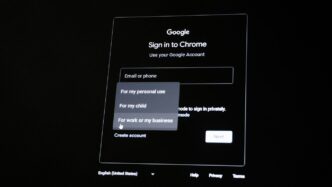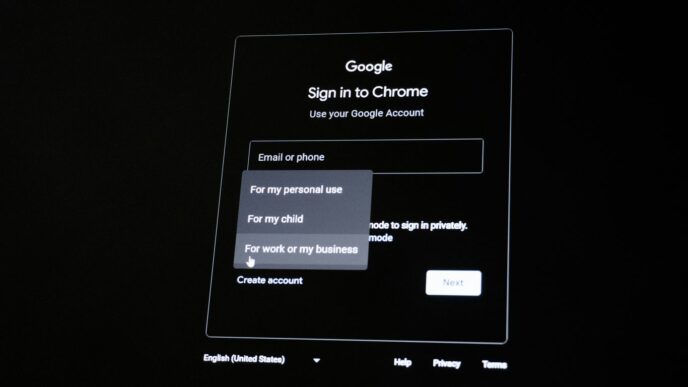So, you’re looking to get your hands on chat gpt 4.0 free, huh? It’s a pretty powerful tool, and honestly, who wouldn’t want to use it without shelling out cash? It feels like everyone’s talking about it, and for good reason. It can help with so many things, from writing emails to figuring out tricky code. The good news is, you actually can use it without paying. We’re going to look at a few different ways you can do just that, so you can start exploring what this advanced AI can do for you.
Key Takeaways
- Microsoft Copilot offers a straightforward way to access GPT-4 capabilities without a subscription.
- Hugging Face provides a platform where you can find and interact with various AI models, including those similar to GPT-4.
- Perplexity AI acts as a research tool that can utilize advanced AI models, offering a free way to explore their features.
- Several third-party applications and browser extensions can provide access to GPT-4 functionalities, often with usage limits.
- OpenAI’s own free tier on ChatGPT gives you access to some advanced features, though often with limitations compared to paid versions.
Leveraging Microsoft Copilot for Free GPT-4 Access
Understanding Microsoft Copilot’s Integration
Microsoft has integrated advanced AI capabilities into its ecosystem, and a big part of that is Microsoft Copilot. Think of it as a helpful assistant built right into Windows, the Edge browser, and Bing search. What’s really neat is that Copilot runs on GPT-4 Turbo, which is a souped-up version of GPT-4. This means you get a lot of the smarts and abilities of GPT-4 without needing a paid subscription. It’s a pretty straightforward way to get your hands on some of the latest AI tech. You can use it for all sorts of things, like asking questions, writing up text, brainstorming ideas, or even getting summaries of longer documents. Plus, it can generate images, which is a fun bonus.
Accessing Advanced Features with Copilot
Getting started with Copilot is simple. You just need a Microsoft account. If you’re on Windows 11, you can usually open it by pressing the Windows key and ‘C’ together, or by clicking the Copilot icon that might be on your taskbar. If you’re using the Edge browser, look for a Copilot button in the sidebar. You can also just go to Bing.com and start chatting there. While the free version is quite capable, Microsoft does offer Copilot Pro for those who want even more. This paid version gives you priority access, especially when lots of people are using it, and adds more customization options. But honestly, for most everyday tasks, the free version of Copilot is more than enough to experience what GPT-4 Turbo has to offer. It’s a solid way to try out advanced AI without opening your wallet.
Navigating the Copilot Interface
Once you’ve opened Copilot, you’ll find a chat interface that’s pretty easy to get around. There’s a main chatbox where you type your questions or requests. You might also see an ‘Explore Ideas’ section, usually on the left side. This area can give you suggestions for prompts or show you what else Copilot can do, like access podcasts. The responses you get are often detailed and well-reasoned, which is a hallmark of GPT-4. Sometimes, because so many people are using these AI tools, you might notice a slight delay in getting a response. It’s just a sign of how popular this technology is becoming. If you’re looking for a way to use GPT-4 without paying for a subscription, Microsoft Copilot is definitely a good place to start. You can find out more about Copilot Pro if you’re curious about the paid upgrades, but the free tier is a great entry point.
Exploring Hugging Face for GPT-4 Capabilities

Hugging Face is a really cool place for anyone interested in AI. Think of it as a big online community where people share all sorts of AI models and tools. It’s a great spot to find and try out different AI capabilities, including those that are similar to what GPT-4 can do.
Discovering GPT-4 Models on Hugging Face
So, how do you actually find these GPT-4-like models on Hugging Face? It’s pretty straightforward. You’ll want to head over to the Hugging Face website. Once you’re there, you can search for specific models. Many users have set up "Spaces" which are like little demo applications for these models. You might find a space specifically for a GPT-4.1-mini model, for example. These spaces are often directly linked to OpenAI’s API, meaning they’re running the actual models. Keep an eye out for new models as they become available; these spaces usually get updated quickly. It’s a good way to see what’s new without needing to set anything up yourself. You can often find these by just searching Google for something like "ChatGPT on Hugging Face".
Utilizing the User-Friendly Interface
Once you find a model you want to try, the interface is usually pretty simple. Most of these Hugging Face Spaces have a chat window. You just type your question or prompt into the box, hit enter, and wait for the AI to respond. It feels a lot like using ChatGPT directly. You can ask it questions, get it to write things, or even help you brainstorm ideas. Just remember that because these models are popular, sometimes the response might take a little longer than you expect. Patience is key here!
Optimizing Your Experience with API Keys
Now, if you want a smoother, perhaps faster, experience, or if you want to use the model more privately, Hugging Face offers a way to connect your own API key. This means you’re using your personal access to the AI model. It’s a bit more technical, but it can help you avoid any potential queues that might form on the public demo spaces. If you’re planning on using these models a lot, looking into how to get an API key and connect it to a Hugging Face space is a good idea. It gives you more control and can make your interactions much quicker. For those looking for other platforms to host AI models, there are alternatives like Northflank.
Utilizing Perplexity AI for Free GPT-4 Usage
Perplexity AI is another solid option if you’re looking to use advanced AI models without paying a subscription. It’s built to be a conversational answer engine, meaning it focuses on giving you direct answers to your questions, often with sources cited. This makes it really useful for research or just getting quick, reliable information.
Getting Started with Perplexity AI
Getting started is pretty straightforward. You just head over to their website. There’s no complicated signup process if you just want to try it out. You can start typing your questions right away. It’s designed to be intuitive, so you won’t spend much time figuring out how to use it.
Exploring Multiple Features and Models
Perplexity AI doesn’t just stick to one model. While it often uses powerful models like GPT-4, it also gives you options. You can sometimes choose different AI models to answer your query, which is neat if you want to compare results or if one model is performing better for a specific task. It also has a "Focus" feature where you can narrow down your search to specific areas like Academic papers, YouTube, Reddit, or even specific news sources. This really helps in getting more targeted answers.
Leveraging Perplexity AI for Research
For research, Perplexity AI is a real gem. Because it pulls information from the web and cites its sources, you can easily check where the answers are coming from. This is a big deal for accuracy and for digging deeper into a topic. You can ask follow-up questions, and it remembers the context of your conversation, much like ChatGPT. If you’re working on a project or just curious about something, Perplexity can save you a lot of time by consolidating information and providing direct answers with supporting links. You can even get started with their API if you’re interested in building applications, and there’s a helpful quickstart guide available.
Accessing GPT-4 Through Third-Party Tools
Beyond the official channels, a variety of third-party tools have emerged, offering access to GPT-4’s capabilities. These platforms often bundle GPT-4 with other AI features or provide specialized interfaces designed for specific tasks. It’s a good way to explore different AI applications without committing to a subscription. Many of these tools are free to try, but often come with usage limits.
Discovering Third-Party Platforms
Several platforms integrate GPT-4, sometimes alongside other large language models. You might find tools focused on writing assistance, coding help, or general chat. Some popular options include:
- Merlin: A browser extension that lets you use AI features across any website.
- Poe by Quora: Offers access to various AI models, including GPT-4, within a single app.
- Forefront AI: Provides a platform for creating and deploying AI chatbots, often with GPT-4 integration.
It’s worth exploring different ChatGPT alternatives to see which interface and feature set best suits your needs.
Understanding Usage Limits and Features
When using third-party tools, pay close attention to their specific terms. Free access usually means limitations on the number of queries you can make per day or month, or restrictions on the complexity of tasks you can perform. Some might offer a limited number of GPT-4 messages before requiring an upgrade.
Here’s a general idea of what to expect:
| Feature | Free Tier Limit (Typical) | Paid Tier Benefit (Typical) |
|---|---|---|
| Daily Messages | 10-50 | Unlimited or High Limit |
| Advanced Models | Limited Access | Full Access |
| Response Length | Shorter | Longer |
| Priority Access | No | Yes |
Choosing the Right Third-Party Tool
Consider what you want to achieve. If you need quick answers while browsing, a browser extension like Merlin might be ideal. If you want to experiment with different AI models in one place, Poe could be a better fit. Always check the platform’s privacy policy and terms of service before sharing sensitive information.
Maximizing Your Free ChatGPT Experience
So, you’ve found some cool ways to use ChatGPT without paying a dime. That’s awesome! But how do you make sure you’re getting the most out of these free options? It’s not just about finding them; it’s about using them smart. Think of it like having a free buffet – you want to try a bit of everything without overstuffing yourself or missing the best dishes.
Understanding Usage Limitations
First off, let’s talk about limits. Most free services aren’t going to give you unlimited access. They have to manage their resources, right? So, you might find that after a certain number of questions or a specific amount of text generation, you hit a wall. It’s important to keep an eye on how much you’re using. Some platforms might give you a heads-up, while others just stop responding. Knowing these limits helps you plan your tasks. Maybe save the really big projects for when you have more time or can switch to a different free tool if one gets capped.
Leveraging Free Tier Features Wisely
These free versions often come with a bunch of features that are pretty neat. You might get access to different AI models, or maybe the ability to search the web directly within the chat. Some even let you upload files or images to analyze. Don’t just stick to basic questions. Try out the extra stuff! If a tool offers image analysis for free, use it to understand a picture. If it can search the web, ask it to find current information for you. Treat these extra features as bonus points that can really boost what you can do. It’s like finding out the free buffet also has a dessert station – you should definitely check it out.
Staying Updated with AI Advancements
This whole AI thing is moving super fast. What’s new and amazing today might be old news next month. The tools that give you free access are also changing. New features get added, limits might shift, or sometimes, a platform might even change how it offers free access. So, it’s a good idea to keep checking back. Read up on updates, try out new tools when they pop up, and see what’s changed. This way, you’re always using the best free options available and not missing out on any cool new capabilities that could make your life easier.
Direct Access via OpenAI’s Free Tier
OpenAI, the company behind the magic, offers a direct way to try out their AI without paying a dime. It’s pretty straightforward, really. You can just hop onto their website or grab the app on your phone. This is the most direct route to experiencing what ChatGPT can do.
Accessing ChatGPT on the Web
To get started on the web, you just need to go to the official ChatGPT website. Once you’re there, you can start typing your questions or requests right into the prompt box. It’s a simple interface, designed to be easy to use. You don’t need to sign up for anything to start chatting, though creating an account might give you access to more features or save your conversation history. They do offer different models, and the free tier usually gives you access to a capable version, though maybe not the absolute latest or most powerful one all the time. It’s a good way to get a feel for how the AI responds and what it can help you with.
Utilizing the Mobile Application
If you prefer using your phone, there’s a dedicated ChatGPT app. Just search for it in your device’s app store. Downloading and installing it is quick. Similar to the website, you can start using it right away. The app is designed to be user-friendly, making it easy to have conversations on the go. It’s a convenient option if you find yourself needing AI assistance while you’re out and about. You’ll get a similar experience to the web version, with the same core capabilities available in the free tier.
Exploring Web Search and Reasoning Features
One of the really neat things about the free tier is that it often includes access to web search and reasoning capabilities. This means ChatGPT can look up current information online to answer your questions, which is a big step up from AI models that only rely on their training data. It can help with tasks like summarizing articles, finding specific facts, or even helping you plan something by pulling in real-time data. Think of it as having a research assistant that can browse the internet for you. This feature makes it much more useful for practical, everyday tasks, not just creative writing or coding help. It’s a solid way to see how AI is changing how we find and process information.
Wrapping Up Your Free GPT-4 Journey
So, there you have it. We’ve looked at a bunch of ways to get your hands on GPT-4 without opening your wallet. From using Microsoft’s tools to checking out other platforms like Hugging Face and Perplexity AI, there are definitely options out there. It’s pretty cool that this powerful AI is becoming more accessible. Remember to keep an eye on how things change, as this tech is moving fast. Give these methods a try and see what works best for you. Let us know in the comments how your experience goes!














